Logitech Quickcam Ultra Vision Review
Logitech Quickcam Ultra Vision
If you have an eye for detail you'll appreciate this superior webcam.
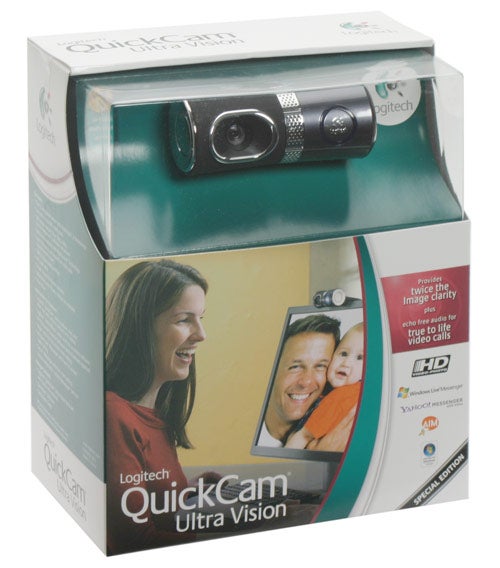
Verdict
Key Specifications
- Review Price: £62.04
Webcams aren’t really a headline grabbing technology and as such most people will probably not have noticed that they have in fact been getting steadily better. They are easier than ever to use with technology such noise filtering on microphones and face making for a more natural usage experience. A couple of years ago you’d be hard pushed to find a camera with a native resolution of more than 640 x 480 – but this Logitech Webcam Vision Ultra offers up (nearly ) 1.3 million pixels – 1,280 x 960 natively.

The QuickCam Ultra Vision is at the posh end of the market, with an RRP of £99, though you can pick it up online for just over £60. At least you’ll feel like you’re getting something for your money – it’s a large chunky affair that feels solid and very well made. However, its size means that it’s not really suitable for use with laptop displays.
The design is actually very impressive. The webcam itself is cylindrical but the camera is mounted inside the barrel rather than at the end as Apple’s iSight was. The edges taper in towards the centre and it’s slightly fatter on the side with the lens. The lens can be rotated up and down to get the right angle, which is easier than having to move the whole thing, as is the case with most webcams.
On the other side to the lens is a Logitech logo with a circular light that flashes blue when the camera is active. The grip on the rear is essentially just a large piece of bendy rubber, but it works surprisingly well, with the USB cable coming out at the centre. On each side there’s a button – one side takes a picture at the selected resolution, while the other launches a video preview screen, with an option to then launch the IM software of your choice depending on what you have installed.
Logitech makes much of the fact that this is an ‘HD’ capable camera – and it has a 960 x 720 preset at which you can record video of yourself though the video only records at 15 frames per second. However, you can only go up to 640 x 480 for actual video conversations.
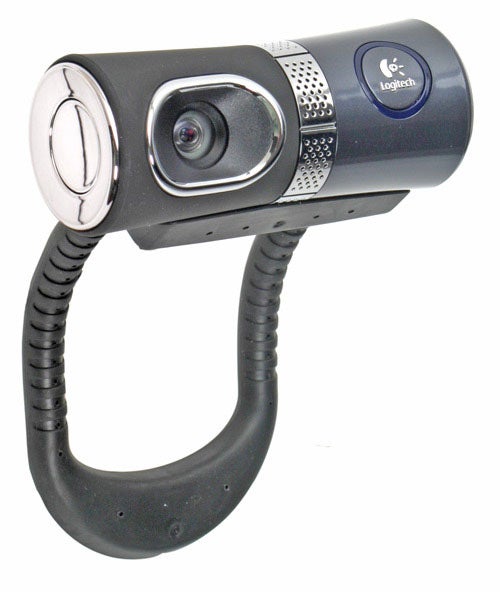
In a world where numbers on boxes help sell said boxes, Logitech obviously felt it important to give us photo resolution up to 4-megapixels despite the 1.3-megapixel native resolution. In fact, there are presets for two, three and four megapixels, though this is all done by software interpolation. It all seems rather pointless to me. The only reason I can think you’d want a larger image is so you can print a larger picture – but wouldn’t you just use a ‘real’ digital camera for that? The very lowest setting of 320 x 240 is rather more sensible and indeed is labelled ‘email’, so you can video at a size that’s practical to send via t’internet.
In the centre of the webcam is a silver grille containing the microphone . It uses what Logitech dubs RightSound technology – essentially echo cancellation tech that filters out the sound of your own voice being transmitted back to you when you’re having a webcam conversation. It worked well.
The software that comes with the device is actually pretty good. A install CD comes with it but the first thing it does it to go online to seek out a newer version, which does make me wonder if there’s any point including install CDs at all these days. You can’t argue that some people might not have Internet access as then a webcam wouldn’t be much use to them.
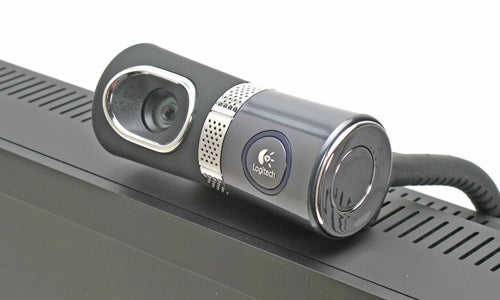
The Quickcam software is a short vertical floating bar with nice colourful icons and getting to all the settings and options is straightforward. QuickCapture launches the preview screen and there’s a button for taking photos or recording video, and pressing on one side of them gives you access to time delay settings. You can easily browse the captured photos and videos, which appear below the preview screen and there are handy buttons for attaching files to an email, sending to a printer or deleting. It’s also straightforward to choose which applications to use the camera with, such as Skype or MSN Messenger and the email client of your choice.

Beneath that you have a Video Effects button, which is actually a lot of fun. You can choose between ‘Avatars’ that replace your face with a cartoon like head, such as a dinosaur, cat or alien or have effects overlaid onto your head. It’s very silly, but fun and you can calibrate it so that your facial movements are mapped onto the avatars. A really great one transforms you into an animated pencil drawing – it’s worth the entry fee alone. Some of the talking heads are quite odd to say the least and could easily scare the young ones; Andy’s comment was, “that’s not right, man”. It is, to be technical, a bit of a ‘‘larf’, but perhaps best avoided when giving a video conference report on the latest company figures to the boss in Japan.
Perhaps more useful is the face tracking technology. This works pretty well and I think benefits from the fact that the camera doesn’t physically move to follow you. It simply zooms and shifts the picture as you moves. There’s a small delay as it tracks you but as long as you don’t start dancing, it does a good job on following your head and can even try and keep two people in shot at once. Oddly, when testing this particular feature, it seemed to have a far greater preference for Andy than for myself, even though we were sitting next to each other. I tried not to take it personally.
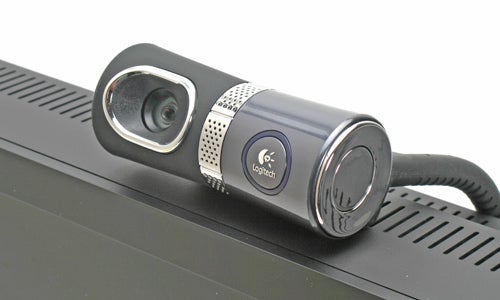
One bug I found was that though the flicker free setting defaulted to 50Hz for the UK, the image still flickered. I discovered that you needed to turn it off and on again for it to actually work.
Among the feature list is what Logitech dubs RightLight 2. This means that the camera compensates for poorer lighting conditions, partly by the camera being equipped with a larger, more sensitive sensor, a better than average lens array and party through software to balance colours our skin tones. The effect is subtle and even when we turned all the office lights off it didn’t make a huge difference with it enabled but it did make for a slightly more natural picture, so I was happy to leave it on. 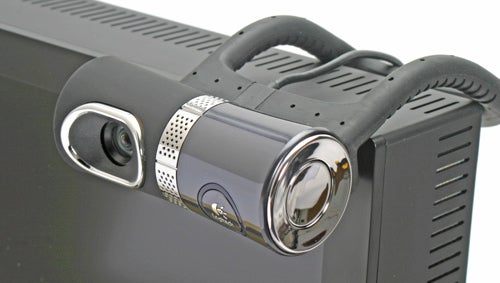
In fact image quality was the real star of this webcam, with it generating the most natural looking image with the truest colours that I’ve yet seen from a webcam. Even at 15fps the video was very good quality. This is down to the large lens containing five precision-engineered lens elements, and it does seem to make a difference. Combined with its ease of use and good looks I’d say that if you have need for one regularly, spending this much on a webcam is just about justified.
”’Verdict”’
The QuickCam Ultra Vision is the best quality webcam I’ve yet tested, producing high quality images with an effective integrated microphone. The software is simple and effective and the video effects are fun. It’s too bulky for use on the move however, and is on the pricey side but the extra quality is worth paying for.
Trusted Score
Score in detail
-
Value 8
-
Features 9

